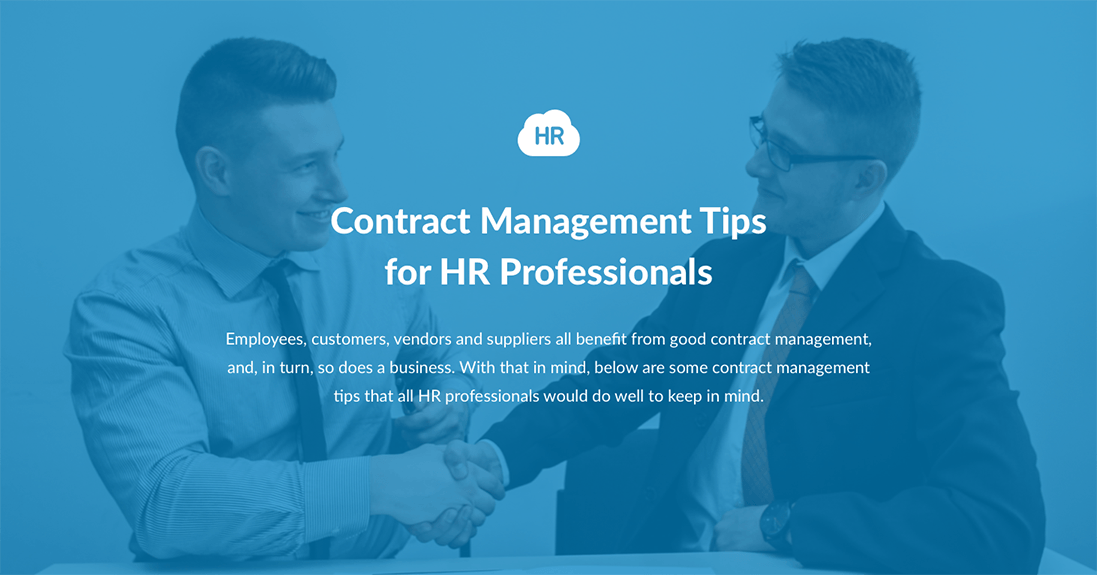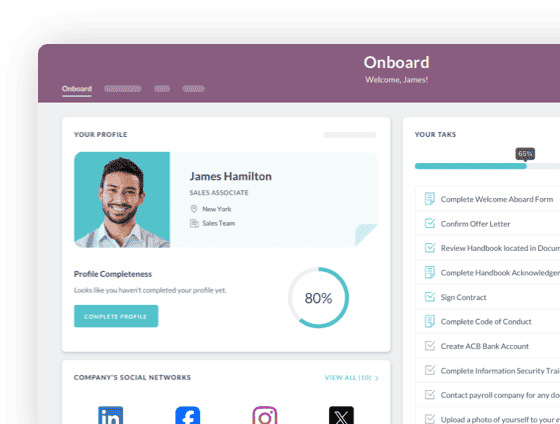
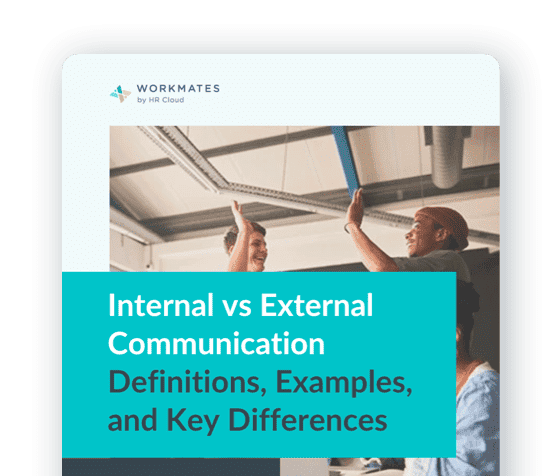
 Cut onboarding time
by 60%—here's the
Ultimate Checklist
that helped do it.
Cut onboarding time
by 60%—here's the
Ultimate Checklist
that helped do it.
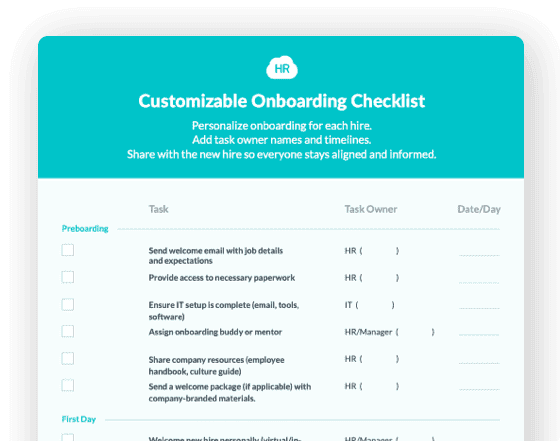
Contract management is, in addition to being an HR specialization unto itself, something that all HR professionals are involved in on a daily basis and need to know. It is much more complex than simply drafting, signing, and filing contracts.
It is an ongoing process that involves foresight, planning, revisions, compliance considerations, and strategy. Contract management is a fundamental part of business success. Employees, customers, vendors, and suppliers all benefit from good contract management, and, in turn, so does a business. With that in mind, below are some contract management tips that all HR professionals and contract managers should keep in mind.
Stay on Top of Storage and Handling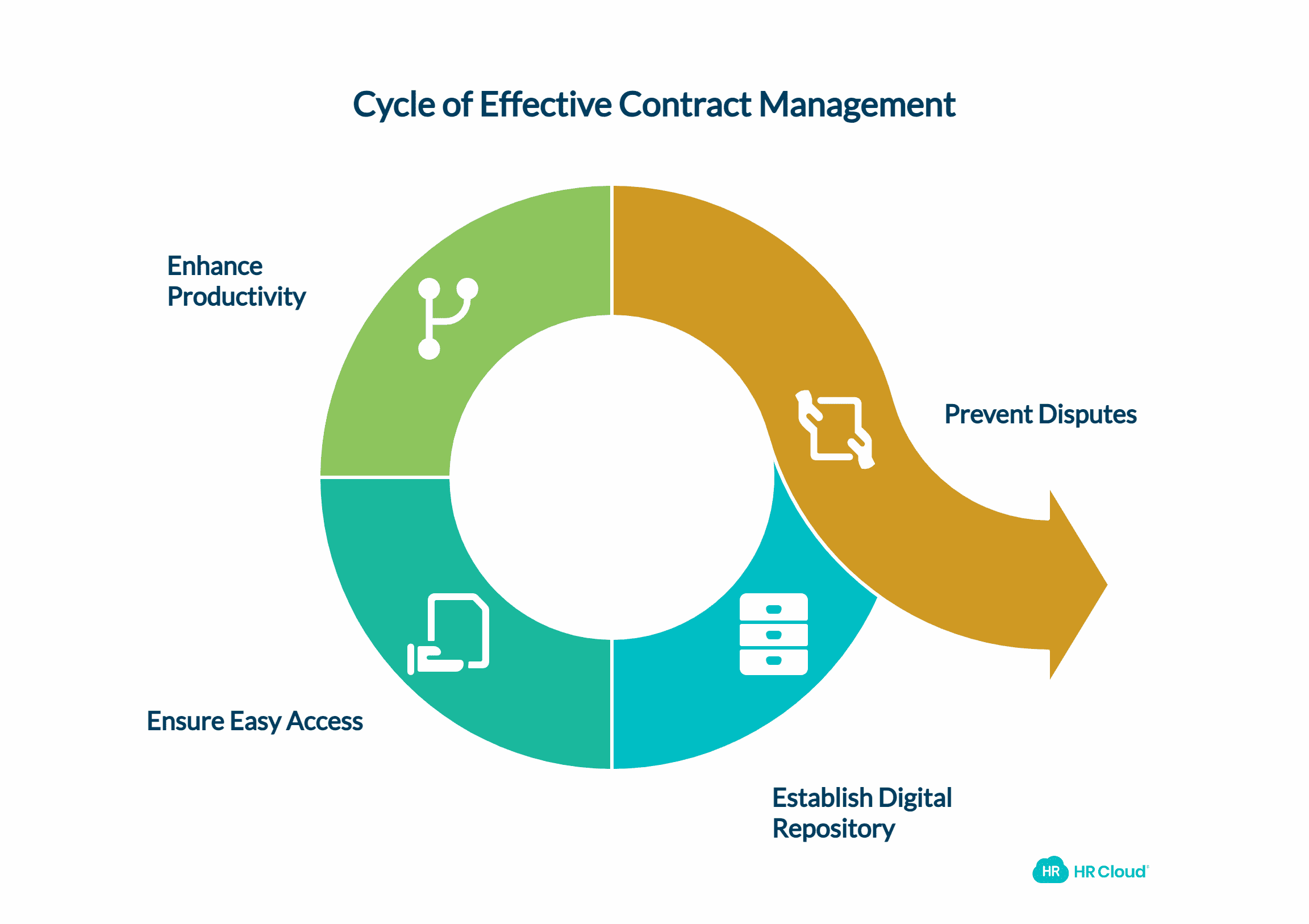
Contract storage and handling a fundamental parts of good contract management from both a compliance and organizational perspective. A digital contract repository is a key component of document management throughout the management lifecycle, provides employees, suppliers, vendors, and clients with peace of mind, and can have a marked impact on productivity. This is because centralizing everything makes it easier for all employees, and especially inexperienced new employees unfamiliar with the idiosyncrasies or downright disorganization of their employer's document management, to find and access the contract information they need to do their jobs. Proper storage also helps in preventing contract disputes by ensuring easy access to contract language and terms.
Constantly Review Your Process and Assess Goals
Your contract management process is not static; it evolves with business goals, market realities, and internal ones. This is why the first rule of good contract management for HR managers is a baked-in review process that is constantly reassessing procedures and ensuring contract management is aligned with organizational goals. These goals might concern cost savings, risk management, or improved transparency between employees and employers.
Prior to the review process, it is important to nail down why you want to change your current contract management practices. Shaping a contract management system takes time, and auditing and tweaking it is not something to take lightly.
Give Employees Access
An employee should always have access to any contract or agreement they have with the organization so that they understand their rights and contract obligations and so that they are able to leave feedback and make suggestions. Having contracts accessible and open is an important part of contract management for HR professionals because it gives them valuable insight into contract shortcomings, what employees like, what they are looking for, and what might dissuade a potential candidate from signing a contract that is easily addressed and fixable.
Giving employees easy access to their employment contracts also makes the performance review process more transparent and reduces legal liability for the company. If employees are aware of what is expected of them and managers know that employees understand their duties and contract obligations, this eliminates tension and potential contract disputes.
Leverage Templates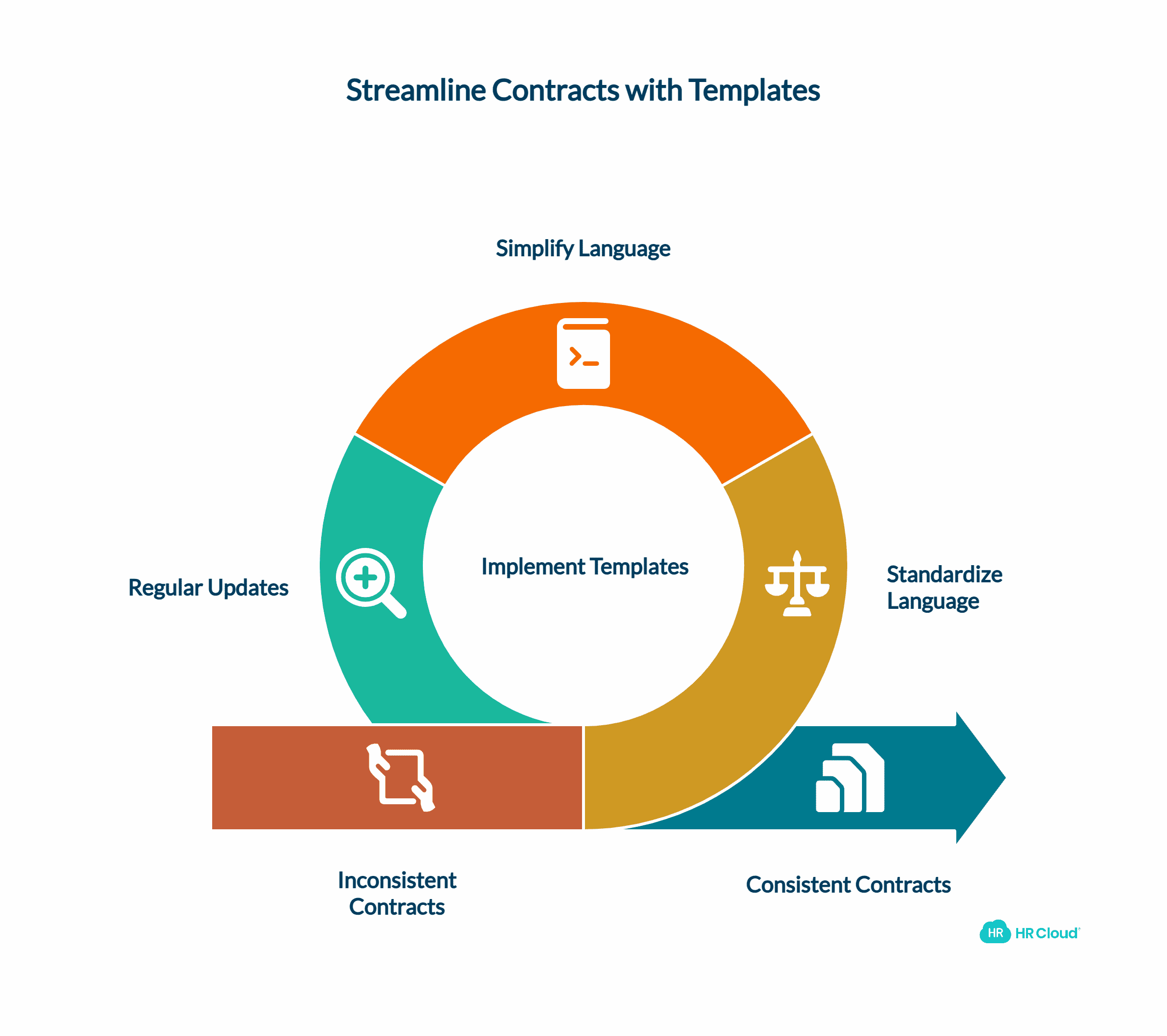
Good contract management also means consistency. Templates with standardized contract language that have already been reviewed and worked on by your legal department save time and manage risk. Templates also provide a better understanding of contract obligations. It can also save a business a tremendous amount of money since it reduces the need to recruit costly legal expertise every time a new contract is drafted.
Two best practices when it comes to contract templates are the use of simple language and avoiding jargon wherever possible. This makes contracts easier to navigate and understand for clients, employees, vendors, suppliers, and other contract stakeholders. Once the structure of a template is there, it can be changed and updated as needed as part of the review process outlined in the above paragraph. Contract standardization through templates also helps in reducing contractual disputes.
Automate What You Can
The bigger and more complex an organization gets, the more contracts it has to manage. This is typically the way things go. As this happens, organizing your product schedules, NDAs, service agreements, master agreements, supplier contracts, and the myriad other legal documents that you rely on to run your business becomes increasingly challenging and a downright headache without good automation practices in place. Poorly optimized contract automation can also have a significant impact on your ability to manage and stay on top of compliance data.
A centralized place that you use to manage contracts throughout their lifecycle is an essential part of good contract management. Therefore, it's crucial to invest in a good contract lifecycle management software so you can easily track and manage each stage of a contract. Automation means fewer administrative errors, more productivity, lower costs, and better consistency. It also means being able to produce contracts and get them signed faster, streamlining everything from employment to benefits to client onboarding.
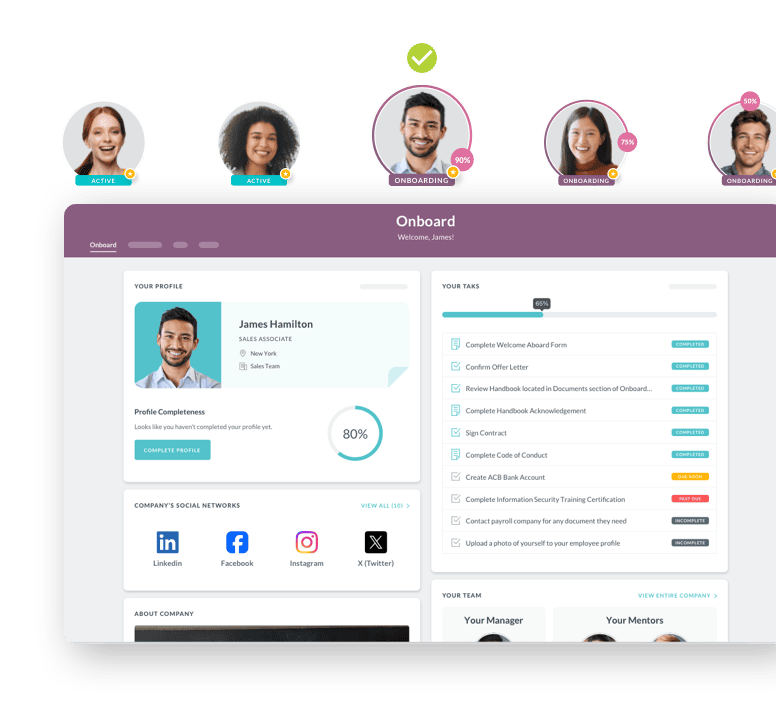
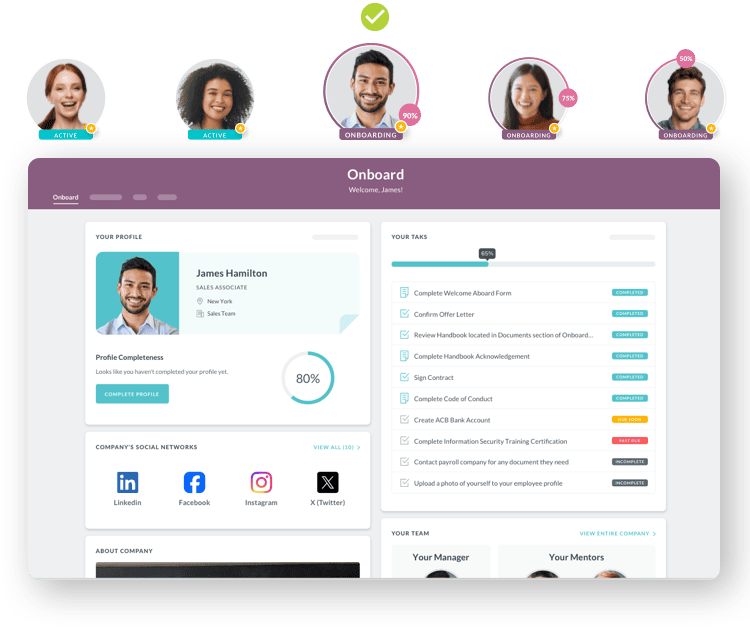
Set KPIs
As with anything, it is important to make sure well-thought-out and strategic KPIs underlie all contract management. You need to define performance metrics up front before designing and signing a contract to ensure that the process is structured in a way that maximizes ROI. An efficiency KPI, for instance, can be used to measure how long it takes to create, approve, and finalize a contract. Deadlines met and the transparency of the contract negotiation process are two other KPIs that can be measured.
It is also important to continuously incorporate feedback into the contract management process. This feedback can be gleaned following the signing of a contract, as well as during exit interviews with employees, by encouraging them to share their experience with the process.
Stay on Top of Risks
It is crucial that HR professionals, and especially those with contract management specializations and in contract-specific roles, have a process in place for continuously scanning for, identifying, and reacting to risks. This includes risk with respect to things like data and personal information handling, out-of-date information that makes human capital allocation decisions less accurate, and whether or not benefits and compensation are competitive with market offerings to avoid losing high-performing and key employees. Contract managers must also be vigilant about potential contract breaches and their implications.
Have a Standardized Dispute Resolution Process in Place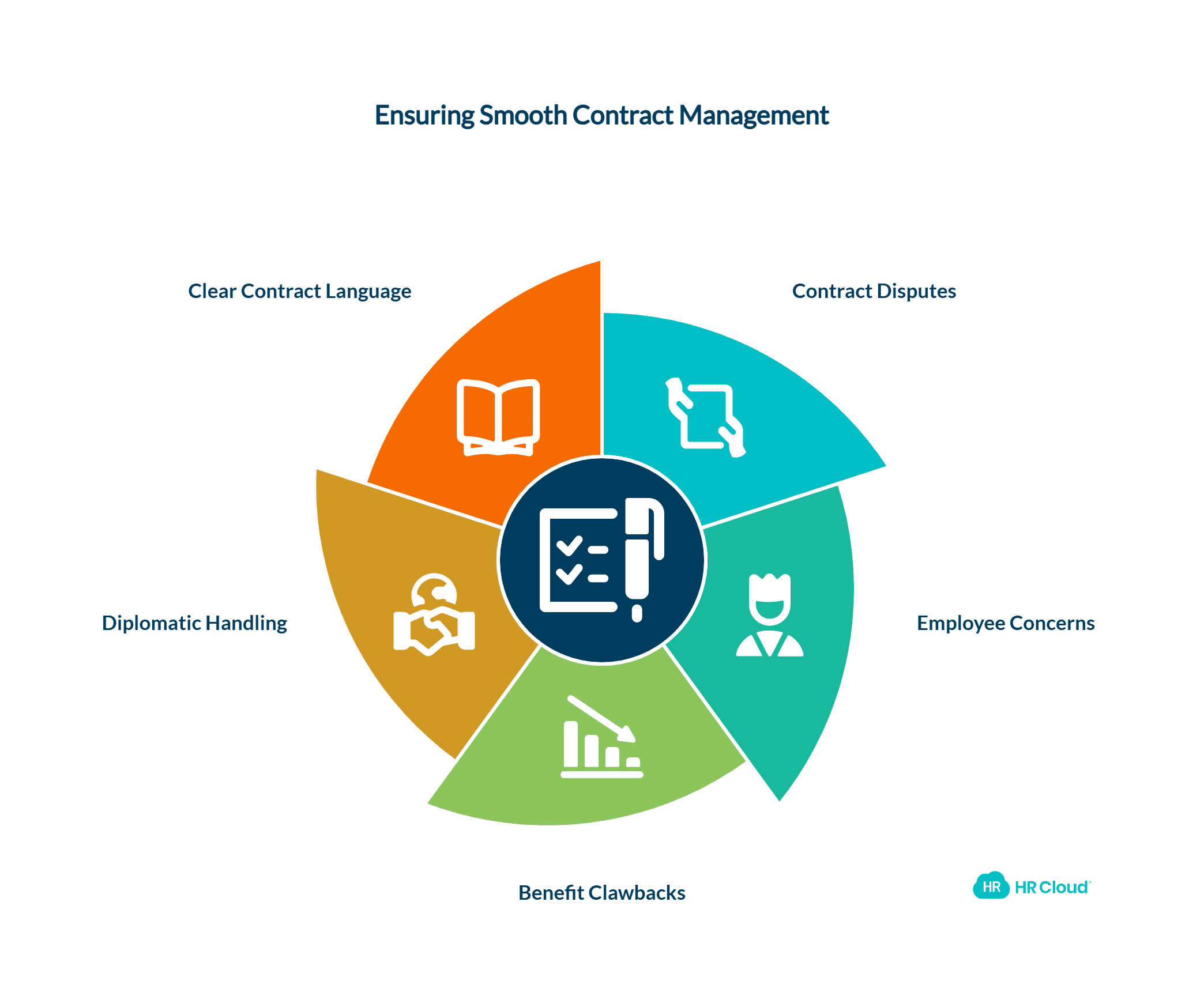
Contract disputes will almost invariably arise throughout the life of a contract, especially as businesses contract and expand. When a business grows, employees may feel that they are being asked to go above and beyond what is laid out in a contract without receiving adequate compensation. If and when a business contracts, there may be contractual disputes over the fairness or justifications behind clawing back certain benefits and other cost-saving measures. Good contract management dictates that there is a contract dispute resolution process in place to make sure these disagreements are handled diplomatically and with the best interests of both parties in mind. This process should be clearly outlined in the contract language to prevent misunderstandings and facilitate smooth dispute handling.
Conclusion
HR professionals and contract managers handle and manage contracts on a daily basis and are increasingly responsible for reviewing and improving contract management best practices. Contract management is a highly involved process. It requires constant review and goal alignment, employee collaboration and input, automation through contract management software, and the use of templates to help standardize, streamline, and cut expenses, and good storage and handling to ensure compliance, data security, and ease of access.
If you are an HR professional or part of a contract management team, the above tips and considerations will make you a more effective administrator of human capital and human resources and a much greater asset to your organization. By implementing these strategies, you can minimize contract disputes, ensure contract compliance, and create a more efficient contract management process overall.
 Discover how our HR solutions streamline onboarding, boost employee engagement, and simplify HR management
Discover how our HR solutions streamline onboarding, boost employee engagement, and simplify HR management

Keep Reading
The Hidden Metrics of Frontline Success: Beyond Engagement Scores
"What gets measured gets managed, but what gets measured well gets transformed." — Peter
Embracing Diversity: Recognizing Different Cultures in the Workplace
Workplaces today reflect the incredible diversity of the world around us. People bring
From Manual to Automated: A Complete Guide to Digitizing Employee Onboarding for Large Organizations
Sarah Chen, Director of HR at a 7,000-employee healthcare organization, starts her Monday
Like What You Hear?
We'd love to chat with you more about how HR Cloud® can support your business's HR needs. Book Your Free Demo

Build a Culture of Recognition. Boost Engagement. Guaranteed.
Workmates empowers employees to stay informed, connected, and appreciated—whether they’re on the front line, in the office, or remote. Recognition drives 12x higher engagement.Trusted by industry leaders in every sector




Cut Onboarding Costs by 60%.
Take the confusion and follow-ups out of onboarding with automated workflows, digital forms, and structured portals—so new hires ramp faster 3X quicker.Trusted by industry leaders in every sector




